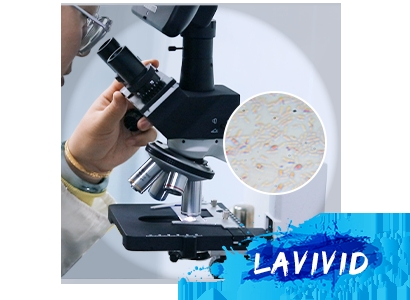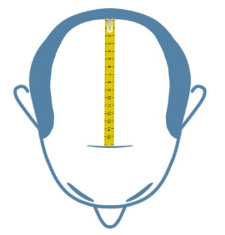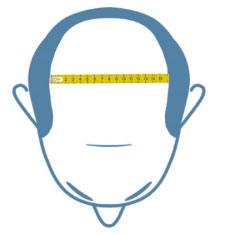
Introduction
In the dynamic world of hair solutions, the surge in interest surrounding antibacterial hair systems speaks volumes about the evolving needs of consumers. Accompanying this renewed interest is the imperative need to grasp the proper application and upkeep of these cutting-edge hair systems. To maintain the longevity and optimum functioning of antibacterial hair systems, let’s explore the fundamental knowledge and best practices for using and maintaining them.
Understanding Antibacterial Hair Systems
Antibacterial hair systems, which strive to stop microbial growth and maintain the highest standards of hygiene, are a modern hair care technology advancement.Since some of the materials used to construct these systems have been treated with antibacterial chemicals, they provide an extra line of defense against hazardous bacteria and germs. Two of their most prominent features are improved hygiene and long-term maintenance of the integrity of the hair system.

Key Points on Usage and Care
1. cleaning instructions: To preserve the antibacterial qualities of your hair system, you must follow specific cleaning guidelines. To gently wash the hair system, use mild antibacterial shampoos and warm water. Refrain from using harsh chemicals or hot water as these could reduce the device’s antibacterial effectiveness.
2. Drying techniques: Effective drying techniques are necessary to inhibit the growth of germs. After shampooing, gently pat the hair system with a clean cloth to absorb any remaining moisture. Use air drying or moderate heat settings to ensure full drying and maintain the antibacterial properties of your hair dryer.
3. Storage advice: When not in use, store your antibacterial hair system in a cool, dry location away from direct sunlight and moisture. Use wig stands or specific storage containers to preserve its integrity and shape. Keep it out of places where germs thrive, such as restrooms, to maintain its antibacterial efficacy.
4. Preventing Contamination: Use clean hands while handling the hair system and keep it away from things that could be home to bacteria to reduce the chance of contamination. Avoid getting styling product residue on your hair system by not using it directly since this might harbor bacteria.
5. Regular maintenance: Establish a routine maintenance schedule to uphold the antibacterial efficacy of your hair system. Regularly clean and sanitize your storage containers or wig stands to prevent bacterial growth. Additionally, consider periodic deep cleaning treatments to ensure thorough hygiene.
FAQ on Antibacterial Hair Systems
1. How do antimicrobial hair products operate?
In order to actively prevent the formation of bacteria and germs and create a sanitary environment for the wearer, antibacterial hair systems use specialist materials loaded with antibacterial chemicals.
2. How frequently must I cleanse my antimicrobial hair system?
Depending on your lifestyle and degree of exercise, it is advised to wash your antibacterial hair system after 8 to 10 years.
3. Is it possible to use conventional hair care products on an antimicrobial system?
While it’s ideal to use mild or antibacterial hair care products designed especially to work with antibacterial hair systems, certain everyday hair care products could work just fine. But always read the product labels and ask your hairstylist for advice.
4. Do antibacterial hair products work only with certain drying techniques?
Using gentle drying techniques, such as air drying or low heat settings, is essential to preserving the antibacterial properties of the hair system.
5. When not in use, how should I preserve my antibacterial hair system?
To keep your antibacterial hair system in form and integrity, store it in a cool, dry location away from moisture and direct sunlight. For this purpose, you can use wig supports or specific storage containers.
6. Can the use of an antibacterial hair system prevent scalp infections?
Proper scalp care procedures should be followed in addition to antibacterial hair products, which provide an extra barrier against microbial growth. They can, nevertheless, also help to keep things tidy and sanitary.
7. Should I exercise caution when managing my antimicrobial hair system?
Use clean hands when using your antibacterial hair system to reduce the chance of contamination. Steer clear of areas that can be home to bacteria, and don’t use strong chemicals or styling products directly on the hair structure.
8. How long will the hair system’s antimicrobial qualities last?
The hair system’s antimicrobial qualities can last for a long time with the right upkeep and treatment. To achieve maximum lifetime, regular cleaning and following care instructions are necessary.
9. I have sensitive skin and allergies; can I still use antibacterial hair systems?
Because antibacterial hair systems are hygienic and hypoallergenic, they are often safe for persons with allergies or sensitive skin. If you have serious concerns, you should conduct a patch test or see a dermatologist.
10. Is there any other advantage to utilizing antibacterial hair systems other than maintaining good hygiene?
Antibacterial hair products offer greater endurance and durability in addition to upholding the highest standards of hygiene since they are immune to microbial destruction. They also provide those seeking a hygienic hair treatment with assurance and comfort.
Conclusion
Antibacterial hair systems stand out among hair care innovations as a novel approach to maintaining hygiene and freshness. By following the usage and care instructions that come with your hair system, you may increase your daily comfort and confidence while extending the life of your hair system. Together, let’s go out on this path to flawless hair care, always putting our health and cleanliness first.





Comments (0)